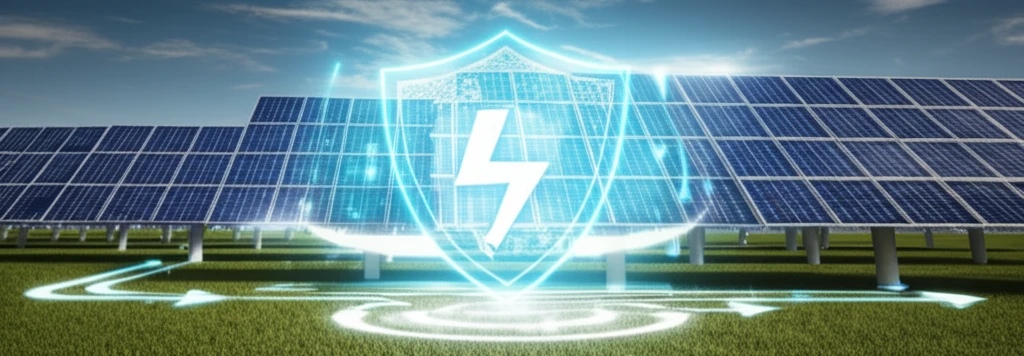
Power Struggle: How Reverse Power Flow Could Be Affecting Your Renewable Energy Grid
"Discover how reverse power flow impacts grid-connected solar systems and what protection strategies can keep your renewable energy future bright."
As electricity demand soars, integrating renewable energy sources like solar photovoltaic (PV) systems into the power grid has become a critical solution. This transition, while environmentally beneficial, introduces technical complexities that need careful management. One such challenge is reverse power flow, a phenomenon where excess energy generated by distributed generation (DG) systems, like solar panels, flows back into the grid. This is the opposite of the traditional one-way flow from power plants to consumers. Managing this bi-directional energy flow is crucial to maintaining grid stability and ensuring the reliable delivery of power.
The increasing adoption of solar PV systems has led to significant advancements in grid technology and protection strategies. When solar panels generate more electricity than a home or business consumes, the surplus energy is fed back into the grid. While this helps to offset energy costs and promotes the use of renewable resources, it can also create a host of problems for the existing grid infrastructure. Traditional power networks were designed to operate with a unidirectional flow of power, and the introduction of reverse power flow can lead to voltage fluctuations, protection miscoordination, and increased fault currents.
This article aims to delve into the intricacies of reverse power flow in grid-connected PV systems. We'll explore the challenges it poses, the protection mechanisms necessary to mitigate its effects, and the innovative solutions being developed to ensure a stable and efficient integration of renewable energy into our power grid. Understanding these dynamics is essential for homeowners, businesses, and grid operators alike, as we strive to create a sustainable and resilient energy future.
Understanding Reverse Power Flow

Reverse power flow occurs when a distributed generation (DG) source, such as a solar PV system, generates more electricity than the local load can consume. In a traditional power grid, electricity flows from large power plants to consumers through a network of transmission and distribution lines. However, with the rise of renewable energy sources, this flow can be reversed. When excess power is generated, it flows back up the distribution lines towards the substation, potentially impacting grid operations and stability.
- Voltage Fluctuations: Reverse power flow can cause voltage levels to rise beyond acceptable limits, potentially damaging equipment and affecting power quality for other consumers on the same feeder.
- Protection Miscoordination: Traditional protective devices, like overcurrent relays, are designed to operate based on the assumption of unidirectional power flow. Reverse power flow can lead to these devices malfunctioning or failing to operate correctly during fault conditions.
- Increased Fault Currents: The addition of DG sources can increase fault current levels in the grid, potentially exceeding the capacity of existing circuit breakers and other protective equipment.
- Equipment Overload: Reverse power flow can overload distribution transformers and other grid components, leading to premature failure and costly replacements.
Ensuring a Stable Renewable Energy Future
While the integration of solar PV systems into the grid presents challenges, effective management of reverse power flow is essential to harness the full potential of renewable energy. By implementing advanced protection schemes, upgrading grid infrastructure, and adopting innovative technologies, we can mitigate the negative impacts of reverse power flow and ensure a stable, reliable, and sustainable energy future.
